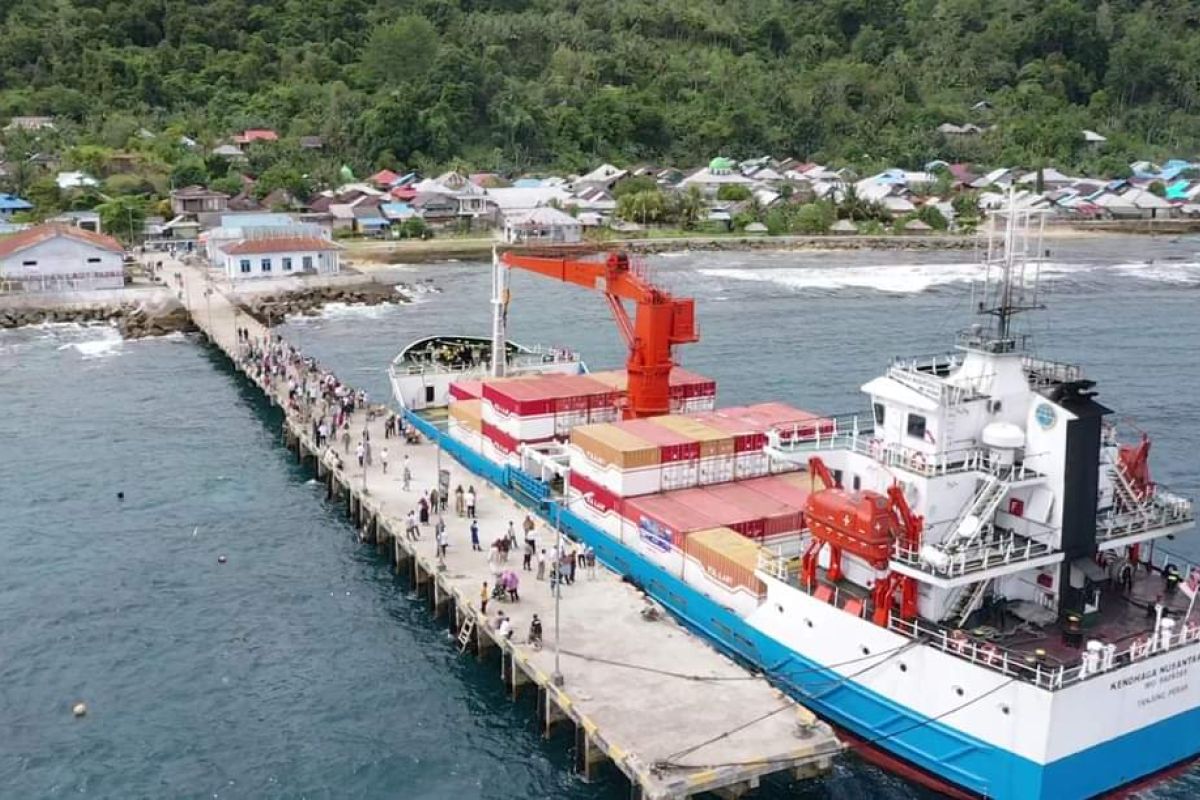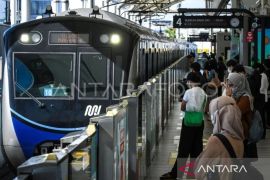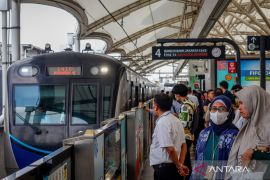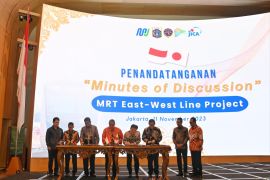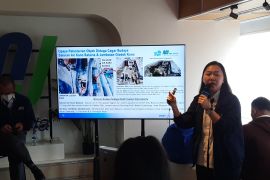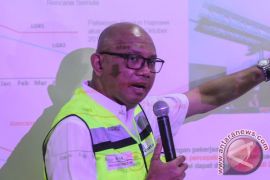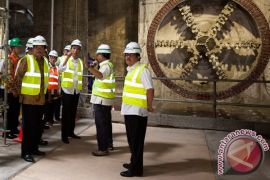In 2015, Jokowi had launched the pioneering sea toll program aimed at eliminating the economic gap among regions in Indonesia. Efforts have been made to address the issue of disparity in prices of commodities and food items between the western and eastern parts of Indonesia by operating sea toll ships that serve 34 routes.
Transportation Minister Budi Karya Sumadi recently announced that customers of sea toll programs can monitor price disparities through the SITOLAUT, an app that provides information and allows its users to order and track cargo deliveries.
Moreover, in 2022, to improve the coverage of sea tolls, the Ministry of Transportation, through its Sea Transportation Directorate General, added two more routes, thereby increasing the total number of routes to 34.
Related news: Sumadi stresses on transportation connectivity to strengthen logistics
Acting Director General of Sea Transportation Arif Toha remarked that in reducing the price disparities between western and eastern Indonesia, sustainable and regular shipping across Indonesia is deemed necessary.
In 2022, the first changes in the route network included changes to some hub ports, addition of stopover ports, and the new route T-30.
Toha revealed that the new route T-30 would serve the Tanjung Perak (Surabaya, East Java) - Kaimana (West Papua) - Tanjung Perak route, so as to facilitate the flow of logistics in the West Papua region directly to Java Island.
"Kaimana Port has an existing pier, with an area of 123 x 8 sq. m, that can accommodate ships, with a capacity of up to 14 thousand DWT and a depth of -8 mLWS," Toha remarked.
He explained that the sea toll at Kaimana Port demonstrates that Indonesia is focused on supporting logistics distribution in eastern Indonesia. Earlier, the sea toll route to Kaimana Port had been served by the T27 route serving the Merauke - Dobo - Elat - Tual - Kaimana - Biak - Serui - Nabire - Elat - Merauke.
Related news: Jokowi inaugurates Pantar Airport aimed at boosting connectivity
Other routes that help realize connectivity among regions in Indonesia are H-1 and T-24. H-1 serves Tanjung Perak - Soekarno Hatta Port (Makassar, South Sulawesi) - Tahuna (Sangihe Islands, North Sulawesi) - Tanjung Perak.
Meanwhile, the T-24 route charts a course around Papua Province's small regions: Merauke (Kelapa Lima in Papua) - Atsy - Agats - Atsy - Senggo - Atsy - Merauke (Kelapa Lima).
With more routes linking several port points in the country, the distribution of supplies in regions can be enhanced, thereby supporting the locals' economy through optimizing the return of cargo ships, according to Toha.
Moreover, on January 28-31, 2022, the KM Kendhaga Nusantara 9 container toll ship firstly docked at the ports of Babang and Saketa in Halmahera Selatan District in North Maluku.
KM Kendhaga Nusantara 9 would serve small to medium ports in the provinces of Maluku and North Maluku, with Surabaya's Tanjung Perak Port as the hub: Tanjung Perak - Piru - Wayaloar- Malbufa- Babang- Saketa- Gimea (Tapaleo) - Bula- Tanjung Perak.
The commitment to building transportation connectivity through the sea toll program for boosting the welfare of locals and Micro, Small, and Medium Enterprises (MSMEs), especially in Eastern Indonesia, has reflected the sound progression in the transportation system in Indonesia.
Related news: Connectivity a determining factor in new capital development: Sumadi
Interconnection
In 2016, President Jokowi had laid the first foundation stone for the Jakarta-Bandung high-speed rail project (KCJB) in Cikalongwetan, Bandung Barat District, West Java, according to the PT KCIC official website.
In the same year, the Ministry of Transportation issued a construction permit for the high-speed rail whose track length is targeted to reach 142.3 km, connecting Jakarta to Bandung. It is claimed that the train can significantly reduce the travel duration between the two cities, from around three hours by regular train to only 35 minutes.
Almost six years later, the work to construct the Jakarta-Bandung high-speed rail was almost completed as of January 2022, reaching 79.9 percent, according to data from the ministry. The government is targeting trials by the end of 2022 and commercial operations in June 2023.
The train built under the project, through cooperation with China, will go through the Halim Station in East Jakarta, Karawang, Padalarang, and Tegalluar in West Java, Director General of Railways Zulfikri pointed out.
Related news: Ministry expedites infrastructure development for economic recovery
Moreover, the KCJB will be integrated with the light rapid transit LRT Jabodebek and bus systems of TransJakarta. For instance, the integration facility between Halim Station and a nearing LRT Jabodebek station will be connected via a skybridge.
Meanwhile, LRT Jabodebek will commence its journey in the office and crowded area Dukuh Atas in South Jakarta and take passengers south to Jatimulya end station in Bekasi District or Harjamukti in Depok City in West Java.
According to state railway company PT KAI's data, the number of daily passengers is projected at 114 thousand, with 560 trips per day.
It is targeted to operate 27 train sets, with each train set having six trains, regularly from 5:45 a.m. to 11 p.m. local time and cross 18 stations in total. Each train set has a capacity to carry around 740 to 1,308 passengers.
As of January 2022, the work to construct the LRT Jabodebek had reached 78.78-percent completion. If the plan is on track, then August 17, 2022, the 77th Anniversary of Indonesian Independence, will mark the first day of operation of the light rapid transit.
Related news: Innovation, collaboration vital for greater sea toll program
On the other hand, the Mass Rapid Transit (MRT) in Jakarta, which commenced operations in 2019, with its phase 1 reaching 16 km, linking Bundaran HI and Lebak Bulus Grab Station bordering Tangerang, has entered its phase 2 construction (2A) in 2021.
The Jakarta MRT phase 2 development project stretches to about 11.8 km from Bundaran HI in Central Jakarta to Ancol Barat in North Jakarta, crossing nine stations. The phase 2 construction is a national strategy project based on Presidential Regulation No. 56 of 2018.
Now, the MRT phase 1 has been integrated with the bus system, thereby reducing traffic and helping the public to reach places faster.
The realization and hope of better transportation-mode integration align with one of Jokowi's priority programs to accelerate infrastructure development that connects regions, tourism, and industry.
Related news: Asymptomatic patients can still transmit COVID-19: Task force
Related news: Jakarta readies six isolation centers with 921 beds
Editor: Fardah Assegaf
Copyright © ANTARA 2022
